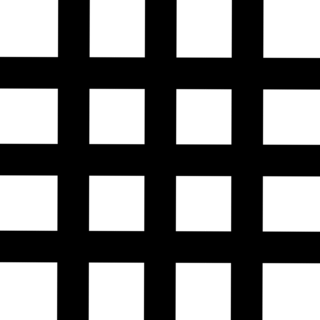
The Iron Guard was a Romanian militant revolutionary fascist movement and political party founded in 1927 by Corneliu Zelea Codreanu as the Legion of the Archangel Michael or the Legionary Movement. It was strongly anti-democratic, anti-capitalist, anti-communist, and anti-Semitic. It differed from other European right-wing movements of the period due to its spiritual basis, as the Iron Guard was deeply imbued with Romanian Orthodox Christian mysticism.
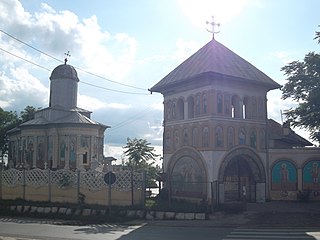
Jilava is a commune in Ilfov County, Muntenia, Romania, near Bucharest. It is composed of a single village, Jilava.

Corneliu Zelea Codreanu, born Corneliu Codreanu according to his birth certificate, was a Romanian politician of the far right, the founder and charismatic leader of the Iron Guard or The Legion of the Archangel Michael, an ultranationalist and violently antisemitic organization active throughout most of the interwar period. Generally seen as the main variety of local fascism, and noted for its mystical and Romanian Orthodox-inspired revolutionary message, Iron Guard gained prominence on the Romanian political stage, coming into conflict with the political establishment and the democratic forces, and often resorting to terrorism. The Legionnaires traditionally referred to Codreanu as Căpitanul, and he held absolute authority over the organization until his death.

Armand Călinescu was a Romanian economist and politician, who served as 39th Prime Minister from March 1939 until his assassination six months later. He was a staunch opponent of the fascist Iron Guard and may have been the real power behind the throne during the dictatorship of King Carol II. He survived several assassination attempts but was finally killed by members of the Iron Guard with German assistance.
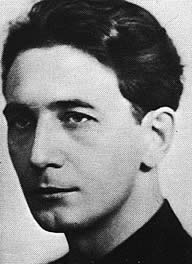
Horia Sima was a Romanian fascist politician, best known as the second and last leader of the fascist paramilitary movement known as the Iron Guard. Sima was also the Vice President of the Council of Ministers and de facto co-leader in Ion Antonescu's National Legionary State. Sima had previously served briefly as State Secretary of Education under Gheorghe Tătărescu in 1940, and as a short-lived Minister of Religion and Arts in the government of Ion Gigurtu.

Ion Mihalache was a Romanian agrarian politician, the founder and leader of the Peasants' Party (PȚ) and a main figure of its successor, the National Peasants' Party (PNȚ).

The National Legionary State was a totalitarian fascist regime which governed Romania for five months, from 14 September 1940 until its official dissolution on 14 February 1941. The regime was led by General Ion Antonescu in partnership with the Iron Guard, the Romanian ultra-nationalist, and anti-communist organization. Though the Iron Guard had been in the Romanian Government since 28 June 1940, on 14 September it achieved dominance, leading to the proclamation of the National Legionary State.

The National Renaissance Front was a Romanian political party created by King Carol II in 1938 as the single monopoly party of government following his decision to ban all other political parties and suspend the 1923 Constitution, and the passing of the 1938 Constitution of Romania. It was the party of Prime Ministers Armand Călinescu, Gheorghe Argeșanu, Constantin Argetoianu, Gheorghe Tătărescu, and Ion Gigurtu, whose regimes were associated with corporatism and antisemitism. Largely reflecting Carol's own political choices, the FRN was the last of several attempts to counter the popularity of the fascist and antisemitic Iron Guard. In mid-1940, Carol reorganized the FRN into the more radical Party of the Nation, designed as a "totalitarian unity party". The party's anthem was "Pe-al nostru steag e scris Unire". It effectively ceased to function the following year when the Parliament of Romania was dissolved.

Corpul Muncitoresc Legionar or Corpul Muncitorilor Legionari was a fascist association of workers in Romania, created inside the Iron Guard and having a rigid hierarchical structure. From its creation until September 1940, the CML was led by Gheorghe Clime; afterwards, the position was filled by Dumitru Groza, who oversaw the Corps during the period when the Iron Guard was in power — the National Legionary State —, and involved it in the 1941 Rebellion and Pogrom. The CML had its headquarters in Bucharest, on Calea Călăraşilor.
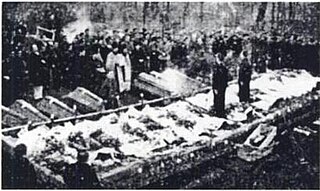
During the 1930s, three notable death squads emerged from Romania's Iron Guard: the Nicadori, the Decemviri and the Răzbunători. Motivated by a combination of fascist political ideology and religious-nationalist mysticism, they carried out several high-level political assassinations in the inter-war period.

Dumitru Coroamă was a Romanian soldier and fascist activist, who held the rank of major general of the Romanian Army during World War II. He was especially known for his contribution to the 1940 establishment of the National Legionary State by the far-right Iron Guard, with which he had been secretly involved for a decade. After beginnings as a schoolteacher in his native Neamț County, Coroamă had become an officer of the 15th Dorobanți Regiment, first earning distinction during World War I. Coroamă helped organize the defense of Western Moldavia, then participated in the Hungarian–Romanian War, establishing Romanian control in Bistrița and Baia Mare. He received the Order of the Star of Romania and the Order of Michael the Brave.
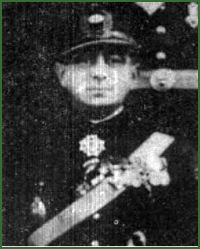
Constantin Petrovicescu was a Romanian soldier and politician, who served as Interior Minister from September 14, 1940, to January 21, 1941, during the National Legionary State.

The relationship between the Romanian Orthodox Church and the Iron Guard was one of ambivalence. The Romanian Orthodox Church promoted its own version of nationalism which highlighted the role of Orthodoxy in preserving the Romanian identity. Starting with the 1920s, the Church became entangled with fascist politics and antisemitism. In this context, the Iron Guard, also known as the Legion of the Archangel Michael, a fascist movement founded in 1927, became very influential with church grassroots. Numerous rank-and-file priests joined the Iron Guard ranks and actively supported its policies; so did a minority of influential high-ranking clergymen such as Nicolae Bălan or Vartolomeu Stănescu.
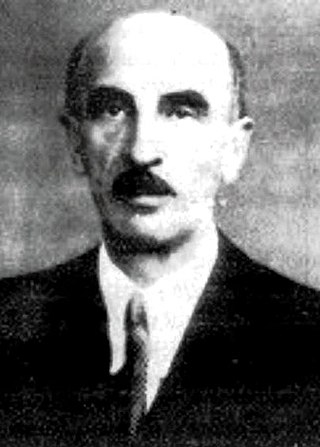
Traian Brăileanu or Brăilean was an Austro-Hungarian-born Romanian sociologist and politician. A native of the Bukovina region, he attended Czernowitz University, where he studied philosophy and classical languages, subsequently earning a doctorate. Ending up as a translator in Vienna, he fought for Austria during World War I. At the conclusion of hostilities, returned to the renamed Cernăuți, now part of Greater Romania. There, he soon became a professor of sociology, leading a "Cernăuți School" of academics during the interwar period.

Armand Călinescu, the then Prime Minister of Romania, was assassinated on 21 September 1939, aged 46, in Bucharest by Iron Guard members under the direct leadership of Horia Sima. This was the culmination of several assassination attempts against him, which included an attack on the Romanian Athenaeum and bombing a bridge over the Dâmbovița River — both of which were uncovered by police. Călinescu was on a secret blacklist at the same time as Nicolae Titulescu, Dinu Brătianu, and General Gabriel Marinescu.

Prince Alexandru Cantacuzino was a Romanian lawyer and politician, a leading member of the Legionary Movement, and a close collaborator of Legionary leader Corneliu Zelea Codreanu. He notably devised a plot to overthrow Carol II, King of Romania, a plan that would later be taken over by Legionary leader and later Vice President of the Council of Ministers Horia Sima. Cantacuzino was killed on September 22, 1939, at the prison in Râmnicu Sărat, during a retaliation operation ordered by Carol II following the assassination of Prime Minister Armand Călinescu.

Gheorghe Clime was a Romanian fascist politician, leading member of the Iron Guard, and president of its electoral wing, Totul pentru Țară.

Radu Mironovici was a founding member of the Legionary Movement, a far-right movement in Romania.

Jilava Prison is a prison located in Jilava, a village south of Bucharest, Romania.

Buna Vestire was a far-right Romanian newspaper affiliated with, and later published by, the Iron Guard.


















